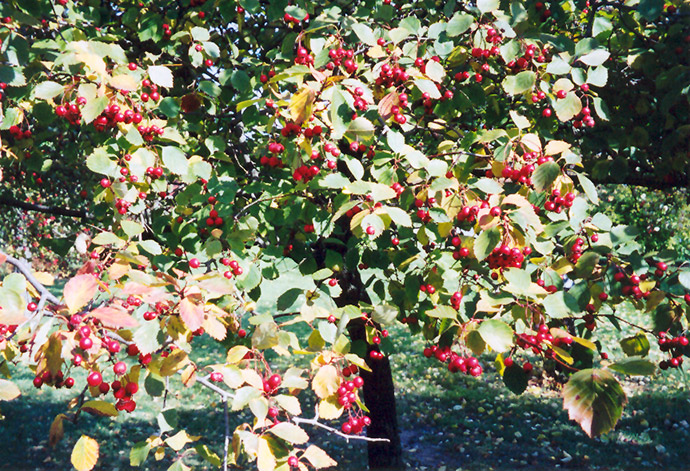Height: 15 feet
Spread: 12 feet
Sunlight:
![]()
![]()
Hardiness Zone: 3b
Description:
A common shrub found along roadsides and the edges of forests, but not very common in home landscapes; forms a small tree with a spreading habit, white flower clusters are followed by copious brilliant red fruit in fall; long thorns are very sharp
Ornamental Features
Fleshy Hawthorn is primarily grown for its highly ornamental fruit. The fruits are showy cherry red pomes carried in abundance from early to late fall. It has clusters of white flowers at the ends of the branches in mid spring. It has dark green deciduous foliage. The serrated lobed leaves turn yellow in fall.
Landscape Attributes
Fleshy Hawthorn is a multi-stemmed deciduous shrub with an upright spreading habit of growth. Its average texture blends into the landscape, but can be balanced by one or two finer or coarser trees or shrubs for an effective composition.
This shrub will require occasional maintenance and upkeep, and is best pruned in late winter once the threat of extreme cold has passed. Gardeners should be aware of the following characteristic(s) that may warrant special consideration;
- Spiny
Fleshy Hawthorn is recommended for the following landscape applications;
- Accent
- Hedges/Screening
Planting & Growing
Fleshy Hawthorn will grow to be about 15 feet tall at maturity, with a spread of 12 feet. It has a low canopy with a typical clearance of 1 foot from the ground, and is suitable for planting under power lines. It grows at a medium rate, and under ideal conditions can be expected to live for approximately 30 years.
This shrub does best in full sun to partial shade. It is very adaptable to both dry and moist growing conditions, but will not tolerate any standing water. It is not particular as to soil type or pH. It is somewhat tolerant of urban pollution. This species is native to parts of North America.
